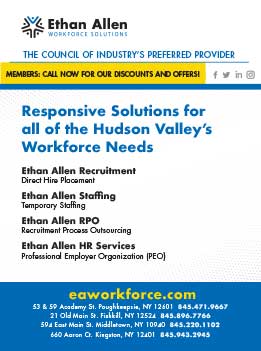Strategic Planning with Dr. William Brown, PhD
Strategic Human Resource Management for Competitive Advantage

The human resources function is a key contributor to an organization’s success. Simply put, effective strategic human resource practice is having the right people, with the right skill sets, in the right place in the organization, at the right time in the business cycle. To accomplish this, clear connections should be made and maintained between the overall strategic goals of the organization with all the major human resource functions on a daily basis.
Too often in the past, the human resources function was not a strategic planning consideration. Organizations formulated their strategic plan without the involvement of the top HR officer of the organization, and then the human resources function was expected to act on the organizational plan which they had no input towards formulating. Given the critical human component in an ever increasingly technologically dominated workplace, the human resources function becomes of critical strategic importance.
The Strategic Planning Process
While many books have been written on this topic, a simple yet effective way to think about the strategic planning process is to construe the organization and its long term success as a system that interacts with its environment. All organizations are embedded in an environment that presents the organization with strategic demands or challenges – industry competitive challenges, legal-political challenges, socio-cultural challenges, and ecological challenges, among others. One of the key issues in strategic planning is to recognize and identify these challenges, determine whether or not an organizational response is warranted, and if so to enact that response. While this process acts out, organizations bring certain “input” into the organizational system– raw materials, financial resources, and human resources. This input is transformed by the organization through the application of a mix of technology, people skills, the organizational structure and flow of work through the policies and procedures put in place to create the organizations “output” – products, services, or knowledge. It is a simple model, but one that many organizations have difficulty in accomplishing effectively.
Human Capital as a Strategic Input
Identifying organizational needs for human capital acquisition is one of the critical roles effective human resource practice plays in this process. An effective recruitment and selection function is the ‘life’s blood” of any organization’s success. What skill sets are needed where and at what times in the business cycle? How and where are individuals with these skill sets identified so that organizations can develop an appropriate applicant pool? How effective is the screening and interview process of the organization and how does it reflect and enact the overall strategic needs of the organization? The acquisition of human capital that meets these criteria is as essential to organizational strategic success as is the acquisition of financial resources or raw materials. Without a quality human capital component to the organizational operations, overall achievement of strategic organizational goals may be jeopardized.
Managing Human Capital Effectively
Effective strategic human resource practice is more than just human capital acquisition, however. Effective strategic human resource practice also involves curation of the human capital after it is acquired. To be truly strategically effective as an organization, each department within the organization should be able to see how what they do contributes to the overall strategic goals of the organization. Every employee within that department should be able to see how their department’s functioning and the performance of their individual job duties contribute to the overall success of the organization. Connecting these dots within the organization can create a synergy that can push an organization to greater strategic heights of productivity and profitability.
These connections can be facilitated through effective employee communications, training and development, employee coaching, application of market competitive compensation and benefits packages, and thoughtful motivational programs designed and administered by the human resources function of the organization. Training and retraining current human capital to reflect continuing organizational skill set demands is crucial to keep the staff of an organization “cutting edge” with industry competitive demands.

Organizational Change Management
An essential step in the strategic planning process is recognizing the need to engage in organizational change management, given the challenges being presented to the organization as input in the iterative business cycle. Constant scanning and analyzing in this strategic domain and fashioning appropriate responses is another area where the human resources function and the overall strategic success of the organization dovetail. Does the organization have the proper technology in place to be industry competitive? Are new generations of technology coming down the line to make current technology obsolescent or obsolete? Will the new technology require new human capital skill sets? If so, does that require retraining of current employees or the acquisition of new employees with the desired skill sets? Will artificial intelligence technology make some human capital redundant? If so, how will the human resources function handle outplacement?
Larger organizational change management questions flow from this analysis, such as how do internal organizational policies and procedures need to change to reflect the new technology? How do specific positions need to be redesigned to reflect these changes? The enactment of this type of organizational change should be accomplished through a unified approach that reflects the organization’s strategic goals. Communications to employees should reflect and emphasize this over-arching connection to the strategic mission of the organization. Change management programs often fail, or at least fail to meet projected results, when they are done in a piecemeal fashion and the connections to overall organizational needs are not articulated for employees.
A Holistic Approach to HR
Too often, human resource initiatives are put in place without overall consideration of the strategic implications of the new program or procedure. Key to effective strategic human resource practice is a more integrative, holistic approach to the human resource function. Often this is accomplished through a human resource planning process in which the area questions what the present and future needs are of the integral human resources functions and how those needs are reflective of, or can be synthesized with, the overall strategic mission of the organization. The overall flow of the analysis and design of work, recruitment and selection of human capital, training and development of both new and current employees, performance review management so that every employee can see how they contribute to the overall success of the organization, compensation and benefits package design and administration so as to motivate employee work towards organizational success, employee relations and employee communications, should all be clearly connected for all employees to see and understand.
This sort of holistic approach to human resources management can best be accomplished by having the top HR officer of the organization “at the table” in the organizational strategic planning process. In this manner, the HR function can be infused into the strategic thinking of the top organizational executives and a key input in the strategic planning process can be a forethought rather than an afterthought when the strategic plan of the organization is developed.

Dr. William S. Brown is a tenured faculty member at the Marist College School of Management where he teaches courses in human resource management. Prior to entering academia, Dr. Brown held world headquarters human resources positions at the Prudential Insurance Company of America, Philip Morris, Inc., and Mutual of New York (MONY). He is the author of over 65 articles, book chapters, and conference papers.




